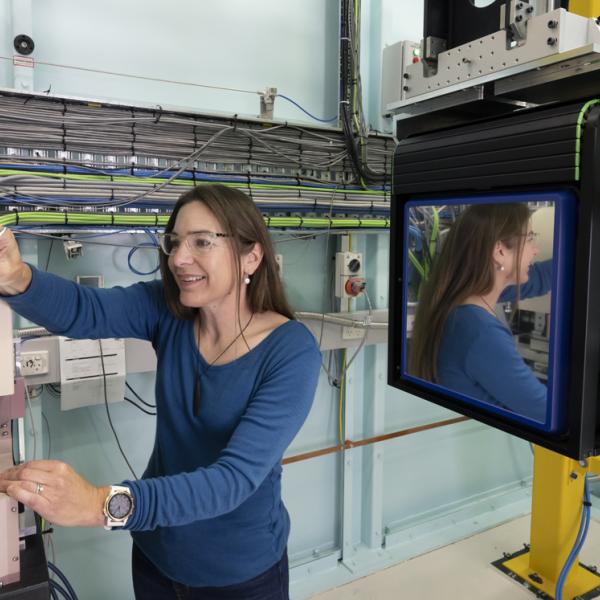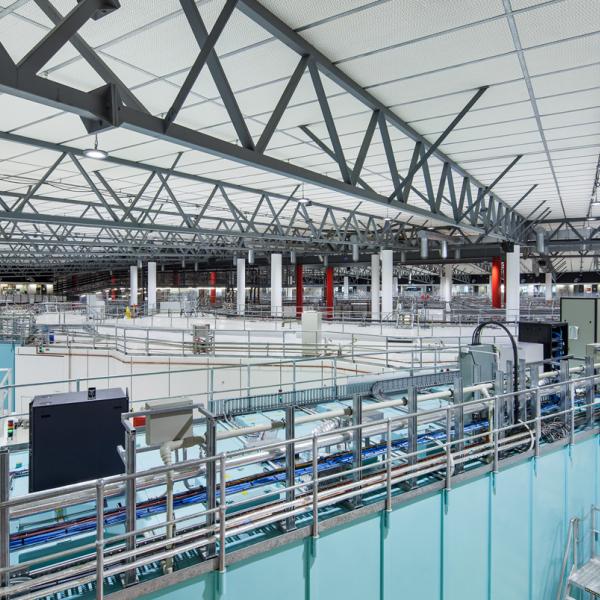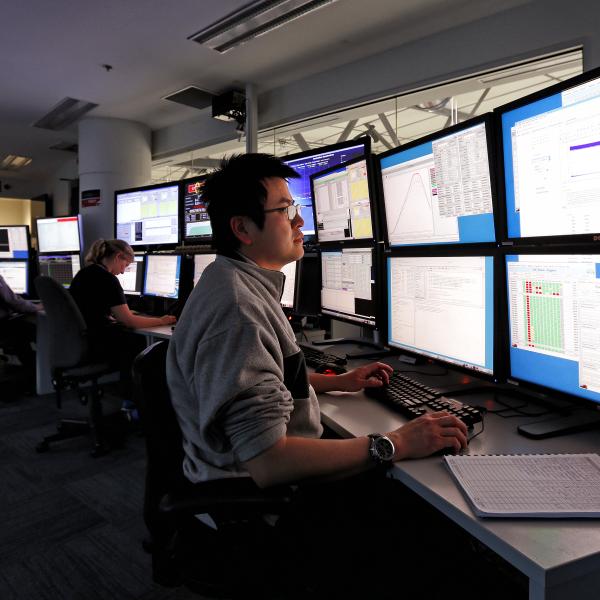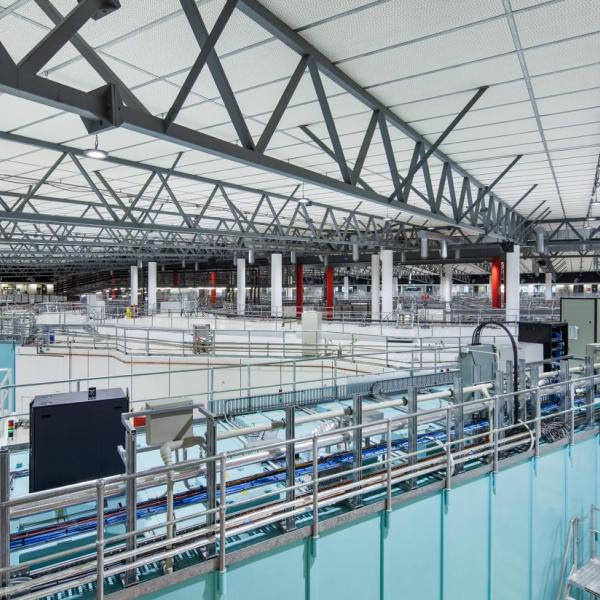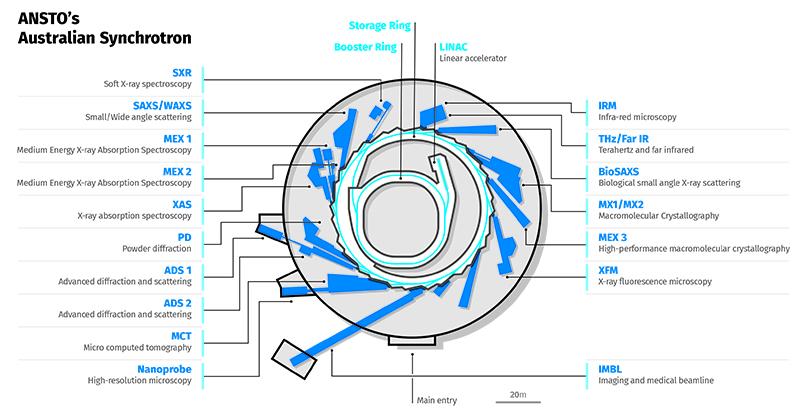
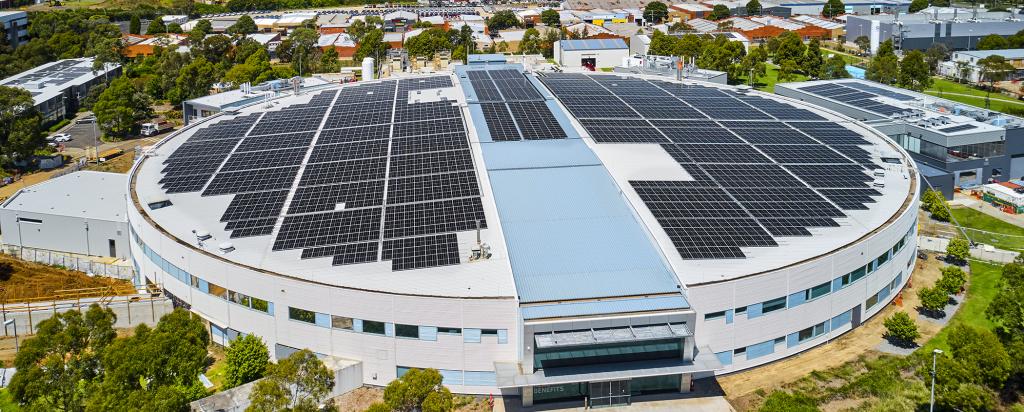
The Australian Synchrotron
The Australian Synchrotron is a major research facility located in Clayton, a technology and innovation hub of southeast Melbourne. It is one of Australia's most significant pieces of scientific infrastructure.
More than 1 million times
Brighter than the sun
216 metres
The circumference of the storage ring
6,000
Research visits per year
Impact
Scientific research and innovation using synchrotron light span hugely diverse areas of activity and has led to advances that bring benefits to Australia and internationally.
The Australian Synchrotron produces powerful beams of light that are used at individual experimental facilities to examine the molecular and atomic details of a wide range of materials. The advanced techniques are applied to research in many important areas including health and medical, food, environment, biotechnology, nanotechnology, energy, mining, agriculture, advanced materials and cultural heritage.
Experiments with synchrotron light offer several advantages over conventional techniques in terms of accuracy, quality, robustness and the level of detail that can be seen and collected, and are much faster than traditional methods.More than 5000 researchers a year use synchrotron instruments. The facility has been directly involved in the generation of more than 3000 publications in refereed journals.
How is synchrotron light created?
After electrons are accelerated to velocities close to the speed of light, they are forced to change direction under a magnetic field.
How it works
The Australian Synchrotron produces incredibly bright light, in frequencies ranging from infra-red to hard X-rays, for the purpose of enabling high impact, research.
It works by accelerating a beam of electrons to nearly the speed of light inside a circular vacuum chamber hundreds of meters in circumference, called a storage ring. To do this, a complex of particle accelerators is required.
Electrons are guided and focussed by a series of strong electromagnets and may circulate for hours of even days at a time. As the relativistic electrons’ path is bent by magnetic fields, they emit electromagnetic radiation called ‘synchrotron light’. The synchrotron light is emitted in a narrow, forward-directed beam, with an intensity that can reach a million times brighter than the sun.
Channelled into experimental workstations via ‘beamlines’, the light then interacts with sample materials. A wide array of research is conducted using the synchrotron light, which can be broadly categorised by analysis technique, be it diffraction and scattering, spectroscopy, or imaging. Each beamline is tailored towards a particular technique with specialised equipment.
There are currently 14 operational beamlines with plans to expand the suite with an additional four beamlines (Project BRIGHT).

History
In June 2001, the Victorian Government announced its decision to build a national synchrotron facility on land adjacent to Monash University. The Victorian Government committed to funding the synchrotron technology and a building to house the facility. Beamline capital funding came from partners such as research institutions and state governments.
In June 2006, the Australian Synchrotron project reached a major milestone with engineers and scientists achieving ‘first light’, confirming that the machine was working as planned.
Since commencing operations in 2007 the Australian Synchrotron has demonstrated that it is arguably one of the most successful scientific user facilities, bringing benefits to over 5000 researchers a year from academia, medical research institutes, government and other research organisations and industry.
In 2013 ANSTO became the new operator of the Australian Synchrotron, which brought together two of the nation’s most significant pieces of scientific infrastructure to advance science outcomes for the nation. ANSTO operates the OPAL multipurpose reactor in Sydney.
Through Project BR—GHT, ANSTO has, to date, secured $94.1 million in funding to expand the research capabilities of the Australian Synchrotron over the next decade. The new funding will expand the number of beamlines from 10 to as many as 19, increasing research output significantly.
Want access to a beamline?
Discover how the Australian Synchrotron can assist your investigation.
Applications
Fundamental and applied research conducted at the Australian Synchrotron brings improvements in human health, leads to the development of new materials and technologies, contributes to environmental sustainability and solves problems for industry.
The specialised techniques have applications in in advanced materials, agriculture biomedicine, defence science, environmental sustainability, food and food technology, forensic science, energy industry, mining, cultural heritage, planetary science, and electronics, among many others. A specialised team of physicists at the Australian Synchrotron also undertake research in accelerator science and develop accelerator systems in a broad range of areas, including feedback systems to modelling future linear collider accelerators. and the design of novel future light sources for precision particle physics measurements.
Helpful links
For more information
Event Enquiries
Monday - Thursday | 9:00am - 3:00pm
